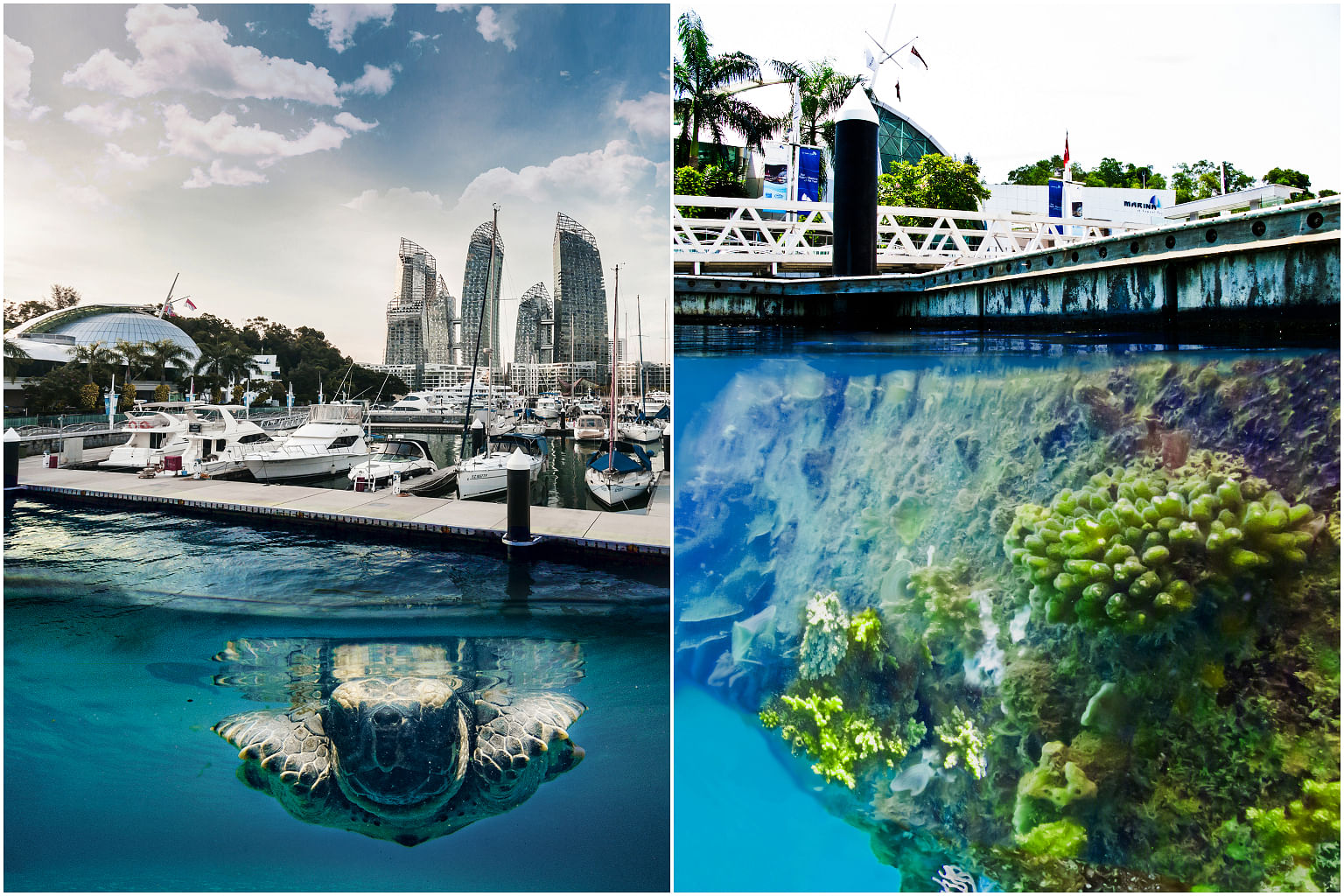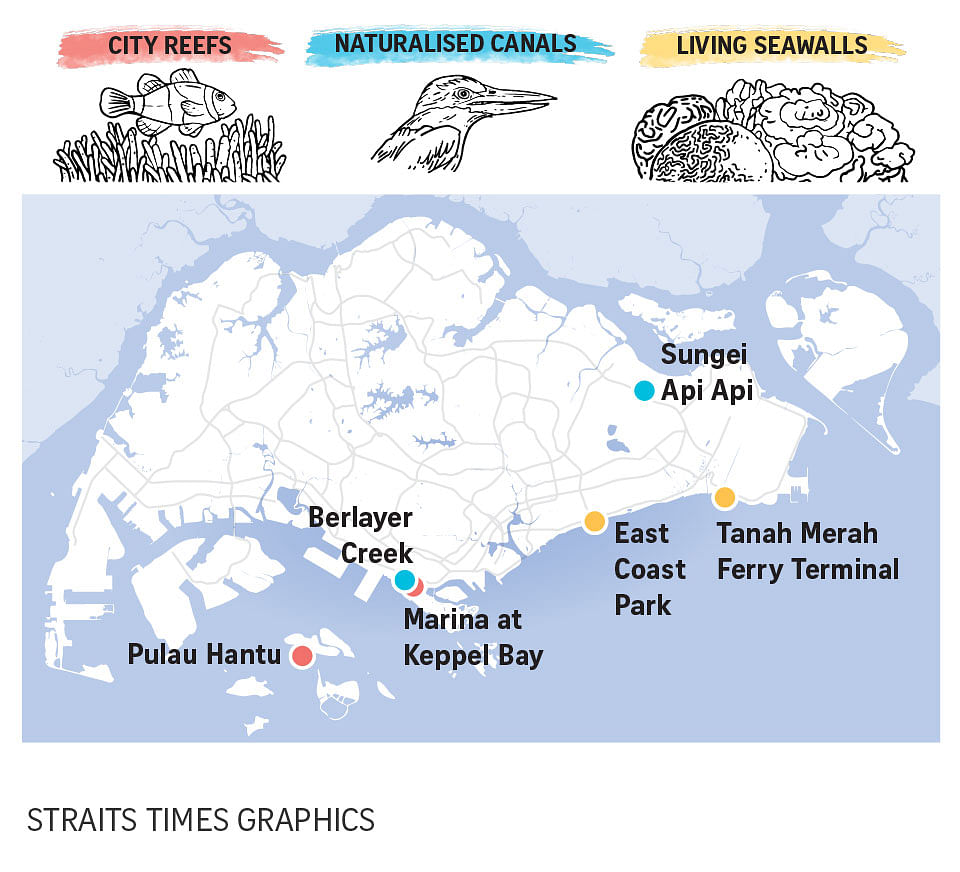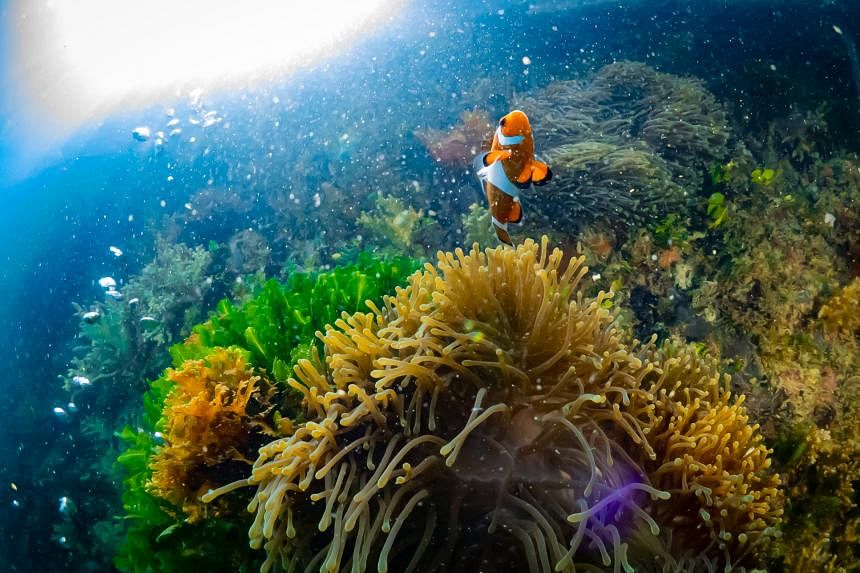SINGAPORE - Hidden below the busy pontoons of Marina at Keppel Bay is an underwater hub of life teeming with colourful corals, fishes and other marine creatures.
Occasionally, endangered spotted eagle rays and critically endangered hawksbill turtles have been spotted in the marina, Mr Alvin Lok, operational performance manager of Marina at Keppel Bay, said.
Keppel Bay is home to several luxury condominiums, including Reflections at Keppel Bay and upcoming development The Reef at King's Dock.
A dedicated team is behind the pristine conditions of the marina which opened in 2008. When heavy downpours last year washed soil from the coast into the marina, Mr Lok and his co-workers spent months sweeping layers of sediment off the corals.
"Because the reefs on the pontoons are so precious to us, we brought in oars to agitate the water such that it dislodges a bit of the sedimentation," said Mr Lok.
"The moment you have dirt settling on corals, it decreases the rate at which they can photosynthesise and leads to their growth slowing down tremendously," he noted.
Each time there was torrential rain, the team would swing into action. "I think that helped to a certain extent, although everybody thought we were a bit crazy, they were telling us to wait for strong currents to wash (the sediment off the corals)," Mr Lok said.
Paradise in Keppel Bay did not occur overnight - in fact, it began about 30 years ago.
In 1992, visitors to the precinct would have been greeted by a murky shipyard that had been entrusted to Keppel Land, a subsidiary of infrastructure conglomerate Keppel Corporation, for redevelopment.
The secret to the marina's transformation lies in Keppel Land's philosophy for the precinct - that whatever was taken away from nature must be restored, said Mr Lok.
For example, the developer decided to spend $30 million to build the cable-stayed Keppel Bay Bridge, instead of a cheaper solid structure akin to the Causeway.
The costlier choice allows currents to flow freely through the marina basin, bringing in nutrients, plankton and marine larvae, while helping to remove sediment that would otherwise settle on marine organisms and smother them, Mr Lok said, noting that this is especially important for corals that rely on currents for food.

The outcome has been visible from the clear waters in the marina as well as the higher density of hard corals - which take a longer time to grow - facing Sentosa, where current flow appears to be stronger, he added.
Granite cladding on the seawalls in Keppel Bay was also selected to accelerate the recruitment of marine larvae on rough surfaces, despite the additional cost.
Floating sea-bins installed near the pontoons of Marina at Keppel Bay filter out debris, such as plastics as small as 2mm in size, and surface scum brought in by the tides.
These design choices are complemented with management practices including a ban on fishing in the marina and pumping of raw sewage into the water.

Apart from providing optimal conditions for sea life, the management team also actively propagates coral reefs around Keppel Bay using stock from the marina.
All these initiatives have led to more than 150 marine life species identified just at the pontoons of the marina, said Mr Lok.
Studies by the National University of Singapore and National Parks Board have found that the abundance and diversity of fish and soft-bottom macrobenthos - organisms that live at the bottom of a water body - were higher within the marina compared with the adjacent open water areas.
Despite the additional effort and cost of developing the waterfront, Keppel Land sees the recreational, aesthetic and environmental benefits of incorporating biophilic design into its developments, said Mr Lok.
"It's not just about buying the buildings itself, it's also buying the surroundings," he added.



